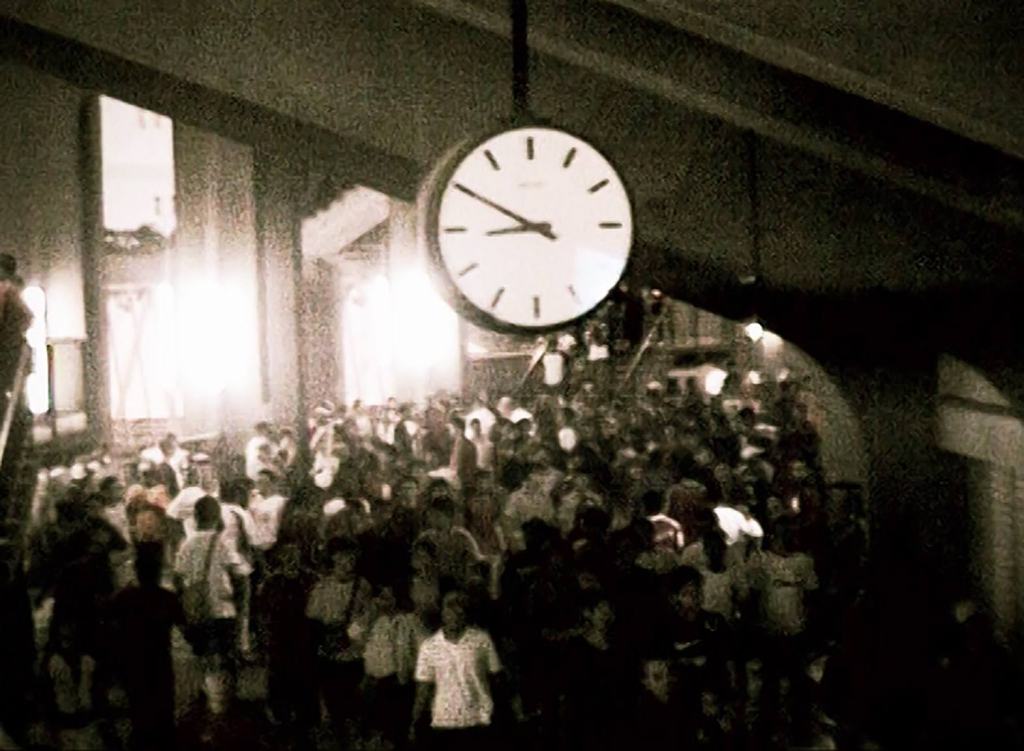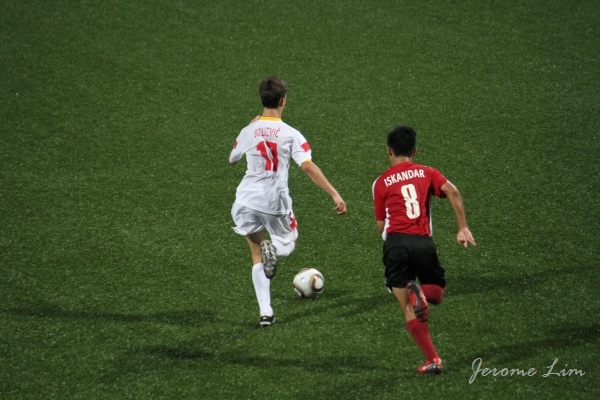An partly wooded area on the edges of Toa Payoh that for long has been insulated from the concrete invasion next to it is the plot of land south of Toa Payoh Rise and the site on which the former Toa Payoh Hospital (ex Thomson Road General Hospital) once stood (see also a previous post: Toa Payoh on the Rise). That, is a world currently in the midst of a transformation, one that will probably see the face of it changed completely and one that will destroy much of the tranquil charm the area would once be remembered for.

A formerly quiet area on the fringes of Toa Payoh that is in the midst of a huge transformation.
The elevated area, is bounded in the north by Toa Payoh Rise, in the south by the expansive grounds of the former Thomson Primary and Secondary Schools, and to the west by Thomson Road, where the SLF Complex – a mid-1980s addition to the area and a wooded area that has been referred to a Grave Hill is found. Grave Hill was where the grave of the illustrious Teochew immigrant, successful merchant and community leader, Seah Eu Chin, was discovered in November 2012 (see Straits Times report dated 28 Nov 2012: Teochew pioneer’s grave found in Toa Payoh and also Seah Eu Chin – Found! on All Things Bukit Brown).

Grave Hill is located on the left of the photograph.
Much work has already been carried out in the vicinity of Toa Payoh Rise – the construction of the Circle Line’s Caldecott MRT Station has seen the area left vacant when the buildings of the former Toa Payoh Hospital were torn down, take on a new face. This, along with the expanded Toa Payoh Rise – previously a quiet road where the calls of tree lizards were heard over the noise of the traffic, is perhaps a harbinger of things to come.

What the future does hold for the area – from the URA Draft Master Plan 2013.
Looking into the crystal ball that is the Urban Redevelopment Authority’s (URA) plans, the latest being the Draft Master Plan 2013 released in November 2013, we can see that a vast part of the area will be given to future residential development with transport infrastructure to support the developments probably kicking-off the complete transformation of the area. Besides surface roads that will be built and the already built Circle Line station, there will also be a Thomson MRT Line station that will expand Caldecott Station into an interchange station, and also the construction underground of the planned North-South Expressway.

The grounds for the former Thomson Primary and Secondary Schools, now occupied by SJI International, is a area I was acquainted with in my Toa Payoh childhood.
One part of the area that is familiar to me from my Toa Payoh childhood, is the grounds of the former Thomson schools, now occupied by SJI International School – an area the construction of the North-South Highway will also be change to. The huge sports field down the slopes from where the school buildings are, was often where football teams formed by groups of boys from the Toa Payoh neighbourhood would meet to play a match in the early 1970s – taking a short cut to the grounds from Lorong 1 from the area close to where the Philips factory is.

A pavement where there once wasn’t, along a well-trodden path that served as a shortcut to Thomson Primary and Secondary Schools from Toa Payoh.
Besides providing the huge playing fields, I always thought that the grounds of the schools placed them in a such a beautiful setting, one that rose high above the main road, close to the forest of trees now being replaced by a forest of towering trunks of concrete. For students of the schools getting in from Thomson Road however, it must have been quite a chore to have to walk up the incline of the road everyday just to get to school – a sight that greeted me passing on the bus in the mornings was the stream of students making what appeared to be a very slow climb up the rising road.

The playing field seen today.

Another view of the field and the expansive grounds.
The schools were relocated at the end of 2000, after occupying the grounds for over four decades. Thomson Secondary does trace its history by to 1956 as a Government Chinese Middle School when, based on information at the website of North Vista Secondary School (which it was renamed as after its relocation to Sengkang), it was formed. Through a merger of Thomson Government Chinese Middle School and co-located Thomson Vocational School, Thomson Secondary was formed in the second half of the 1960s. Thomson Primary on the other hand started its life as Toa Payoh Integrated Primary School.

Towering trunks of concrete seen rising behind the former Thomson Secondary School.
Next to the grounds of the schools, the twin octagonal towers of the SLF Complex, has dominated the landscape since the mid-1980s. Built by the Singapore Labour Foundation, one tower, built originally with the intention that all unions affiliated to the National Trades Union Congres (NTUC) could be housed under one-roof, was sold to the Ministry of Community Development (currently the Ministry of Social and Family Development or MSF) in 1986. The People’s Action Party, which has ruled Singapore since independence, also had its headquarters in the SLF Complex. It moved the headquarters there in 1986 from Napier Road, before moving out to its current premises in New Upper Changi Road in 1996.

The twin octagonal towers of the SLF Complex as is seen from the Singapore Polo Club across Thomson Road.
At the SLF Complex’s backdoor, which leads out to Toa Payoh West, the impending transformation that will come to the area is very much in evidence. Clearance work is already underway on both sides of the road that will permit construction works for the future MRT line as well as tunneling work for the future expressway to be carried out.

Clearance work is already being carried out at Toa Payoh West.
On the south side of the road, a complex of low-rise buildings from a more recent past is currently in its final days – demolition work on the complex, the former Elders’ Village is already underway. The village, completed in 1995, was put up by the Singapore Action Group of Elders’ (SAGE) on land it obtained on a 30-year lease which expired in 2012. SAGE originally had ambitious plans for the Elders’ Village, which would have included resort-type facilities and chalets, but was forced to scale back on plans due to a lack of funds.

The former SAGE Elders’ Village as is seen from the SLF Complex, now being demolished.

A view of the clearance works around Toa Payoh West.
On the relentless march Singapore has embarked on towards achieving its vision for the future, there certainly will not be any lack of funds. Much activity seems now to focused on developing roads, transportation links and housing to support the huge growth in population that is anticipated (see also: Population White Paper and the supporting Land Use Plan). With this effort, many places such as the quiet and somewhat forgotten buffer between Toa Payoh and Thomson Road, will all too soon have to go. While the efforts will bring us new worlds some may wish to celebrate, with it will also come the inevitable crowd of concrete. And while it is nice to see that the Draft Master Plan 2013 does provide for many pockets of green spaces, there will however be but a few places left on the island that will be left to find an escape that for me will increasingly be needed.

Another view of the former Elders’ Village.
Changing Landscapes in the vicinity:






























































































































































